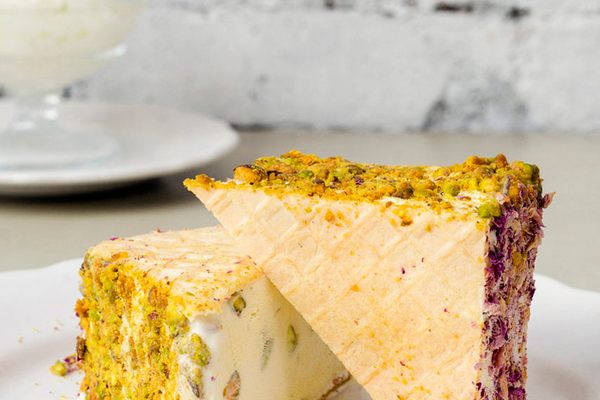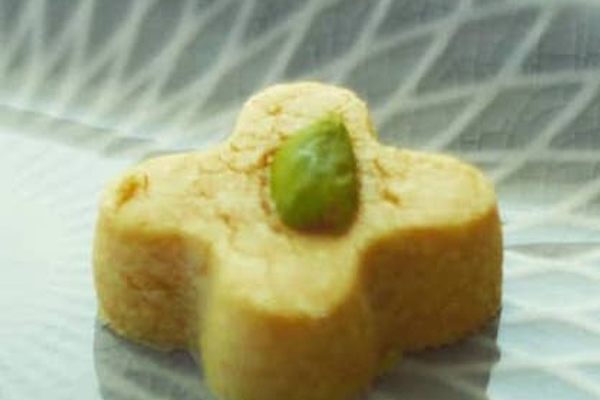Pashmak in Persian means “like wool,” but that’s certainly not what the delicate strands of this melt-in-your-mouth Iranian sweet taste like. While in the past, pashmak might have been made by home cooks, the space, time, and skills required to perfect this dessert have relegated it to the hands of professional confectioners who use industrial tools to make this delightful candy, which is sometimes marketed outside Iran as “Persian fairy floss.”
This labor-intensive sweet is prepared by roasting flour in butter and blending the dough with caramelized sugar that has cooled and acquired the chewy texture of taffy. As it cools, the sugar is scooped up and rolled into a large ring using a pastry scraper and expert hands that deftly stretch, pull, and twist with the precision of a choreographed dance. Confectioners then place the roasted flour and ring of sugar on a large work surface, where a special machine with octopus-like appendages helps to combine them and further stretch the mixture into a larger circle. After several alternating rounds of mixing and stretching by hand and by machine, the fine strands of what will become pashmak begin to emerge. When the strands are wispy-thin and fluffy, they’re cut up and packed into boxes and trays, occasionally garnished with pistachios. Sometimes additional flavoring is added in the pashmak; sesame paste or oil is the most common, but orange blossom, rose water, cardamom, pistachio, and saffron are also popular. Finally, the candy is ready to be transported to the shirini (sweet) shops of Iran.
Pashmak is believed to have originated in the Iranian city of Yazd. While it can certainly be eaten on its own, it is a popular decorative garnish for ice creams, cakes, and puddings. Slightly sticky to the touch, pashmak has a light mouthfeel that betrays its dense, rich composition. The nutty taste of the roasted flour, combined with the buttery sweetness of this fun little candy, lingers long after it has been enjoyed.
Where to Try It
-
Haj Khalifeh Ali Rahbar
Salman-e-Farsi & Imam St, Yazd, IranThis sweet shop is located near the famous Amir Chakhmagh Complex.
Written By
 Rohini Chaki
Rohini Chaki
Sources
- www.youtube.com/watch?v=HQotLxPexwA
- www.youtube.com/watch?v=dqoYGLWJahw
- books.google.com/books?id=R1bCBwAAQBAJ&pg=PA746&lpg=PA746&dq=difference+between+pashmak+and+pismaniye&source=bl&ots=TUMlRrhaw_&sig=ACfU3U3DUEsRNIV5yTa6aX7jl8OZA1Eksw&hl=en&sa=X&ved=2ahUKEwjzmv_75YbgAhUPVd8KHZIPBPE4ChDoATAHegQIAhAB#v=onepage&q=difference%20between%20pashmak%20and%20pismaniye&f=false














